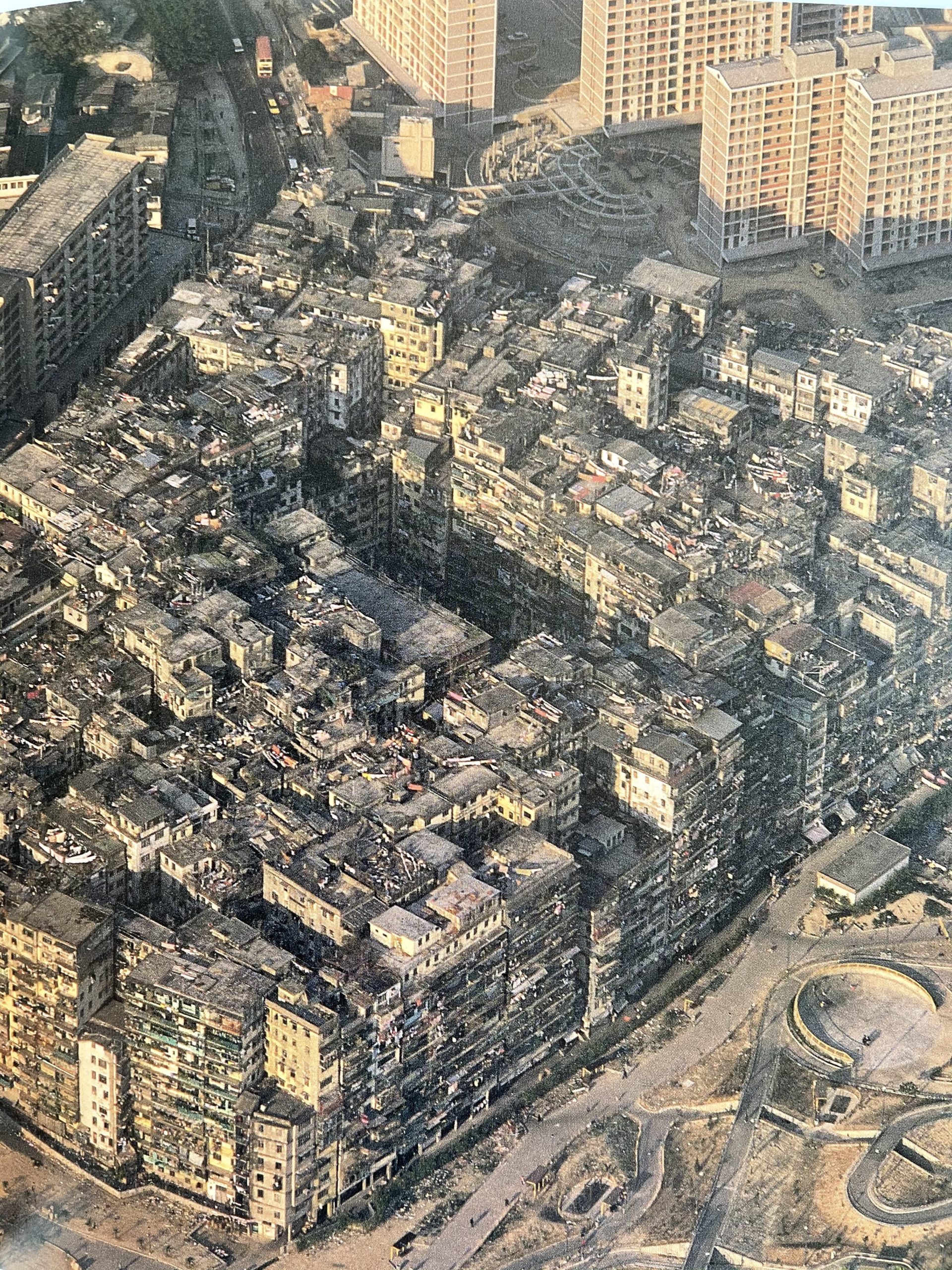Imagine a place where skyscrapers barely touch the sky, where humanity’s desperation takes root in the tight, claustrophobic spaces between buildings. A place where lawlessness and a constant struggle for survival become the fabric of everyday life. This was Kowloon Walled City, a labyrinthine urban behemoth that defied all boundaries. It was a place shrouded in darkness, both literally and figuratively. Today, all that remains is a void in the bustling landscape of Hong Kong, a chilling reminder of a city that existed outside the law and within the shadows.

Image: www.hellohongkong.com.hk
But what was life really like within these concrete walls?
Kowloon Walled City was a microcosm of humanity’s ability to adapt, to survive, and to thrive in the direst of conditions. What started as a small fortified village in the 19th century, eventually morphed into a self-governing, densely populated urban jungle. Its streets were a maze, its buildings reaching for the sky, each floor a testament to the sheer density of its population.
The Shadows of the Walled City
Life in Kowloon Walled City was a constant struggle for survival, a relentless battle against scarcity and darkness. The lack of formal government meant that crime, poverty, and disease became endemic. The city was a haven for criminals, a breeding ground for the illicit, and a place where darkness gripped the lives of its inhabitants.
The city’s 33,000 residents lived in a constant state of fear. Gangs wielded their power, and organized crime flourished. Violence was a daily occurrence, and the police, while present, had little authority within the walls. Yet, amidst the lawlessness, resilience blossomed. A community thrived, one where neighbors looked after one another, and where the strong protected the weak. The city, in its twisted way, fostered social cohesion and a distinct sense of belonging.
A Symphony of Survival
While the city was shrouded in darkness, it was also teeming with life. A diverse population packed into the city’s narrow alleys, each with their own stories and their own struggles. Street vendors sold their wares, attracting customers with a symphony of sounds – the clatter of cookware, the sizzling of street food, and the chatter of locals. The city’s vibrant economy was a testament to its resilience.
Life within the city walls was a constant adaptation to the environment. One of the most striking aspects was the city’s architecture. Buildings rose vertiginously, their floors squeezed into the smallest of spaces. They were a testament to resourcefulness, a constant push against the limits of what was possible. The city’s interior was a chaotic tapestry of metal, concrete, and hastily constructed wooden structures. It was a place of constant construction and demolition, a relentless cycle of adaptation to meet the demands of its growing population.
The Dark Side of Paradise
But the darkness was ever present. The city was a hotbed of illegal activities. From drug trafficking and prostitution to gambling dens and underground factories, the city was a haven for the criminal underworld. The authorities struggled to maintain control, and the city had a distinct reputation for being lawless and dangerous.
The lack of sanitation and inadequate access to basic amenities made living conditions extremely challenging. Disease was rampant, and the city’s cramped quarters were a breeding ground for infection. The city, for all its resilience, was a place where survival felt like a constant struggle.

Image: galeriebabylone.com
The Unmaking of a City
The grim realities of life in Kowloon Walled City finally caught up to it. The city’s lack of sanitation and its reputation as a criminal haven reached a tipping point. The Hong Kong government finally decided to demolish the city in 1993.
The demolition of Kowloon Walled City was a complex and emotional event. For some, it was a welcome end to a chaotic and dangerous era, an opportunity for a new, more ordered future. For others, it was a heartbreaking loss, a wrenching goodbye to a place that had been home for generations.
City Of Darkness Life In Kowloon Walled City
Relics of a Lost World
Today, only a park stands on the site of Kowloon Walled City. It serves as a reminder of a place that existed outside the boundaries of order and law. The city’s legacy continues to haunt the collective memory, a testament to the extremes of human resilience and a stark reminder that even in the darkest places, life finds a way.
But Kowloon Walled City also offers us a valuable lesson about the importance of planning, sanitation, and human rights, reminding us that the darkness of a society can be averted by creating safe and equitable spaces for all.
The story of Kowloon Walled City serves as a cautionary tale for the future, a reminder of what happens when order and law are absent, and a testament to the enduring human spirit, a spirit that thrives even in the face of adversity.
If you’re interested in learning more about Kowloon Walled City, there are numerous documentaries, articles, and books available online. You can also visit the Kowloon Walled City Park in Hong Kong, where remnants of the city’s past still linger, a poignant reminder of its complex and captivating history.





